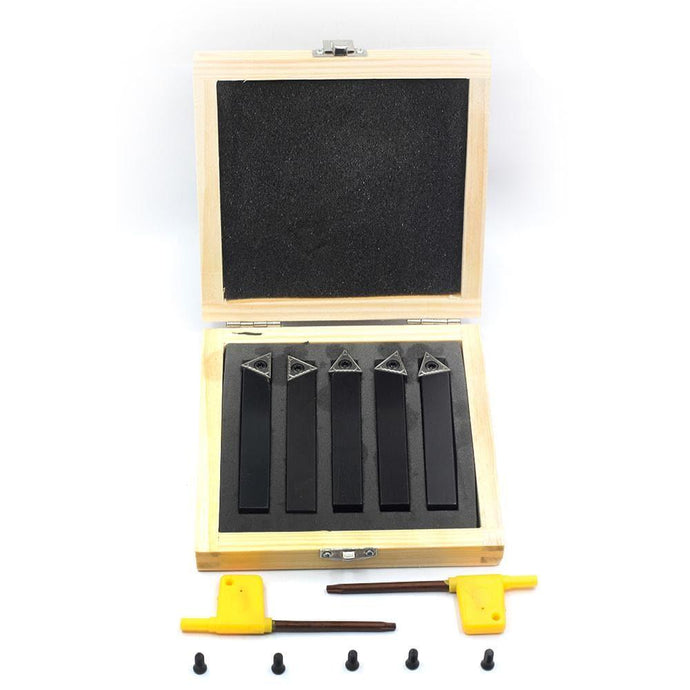

In the realm of manufacturing and machining, metal turning tools have become the cornerstone of precision engineering. These tools, essential for shaping and finishing metal components, have evolved significantly over the years, reflecting advancements in material science, technology, and manufacturing processes. Understanding the impact of metal turning tools offers insight into their pivotal role in producing high-quality, precise components across various industries.
Metal turning tools, primarily used on lathe machines, are designed to cut, shape, and finish metal workpieces with remarkable accuracy. Their function is integral to a wide range of applications, from aerospace and automotive to electronics and medical devices. The evolution of these tools has been driven by the need for greater precision, efficiency, and versatility in machining operations.
At the heart of metal turning tools is the concept of cutting dynamics. Modern tools are crafted to handle diverse metal materials, including steel, aluminum, titanium, and exotic alloys. The choice of tool material - whether high-speed steel, carbide, or ceramic - depends on the specific requirements of the machining task. Carbide, for instance, is favored for its hardness and durability, allowing it to maintain sharp cutting edges even under high-speed conditions. Ceramic tools, on the other hand, are used for their ability to withstand extreme temperatures and abrasiveness, making them ideal for tough materials and high-precision operations.
One of the key advancements in metal turning tools is the development of advanced coatings and treatments. Coatings such as titanium nitride (TiN) and titanium carbonitride (TiCN) are applied to tool surfaces to enhance hardness, reduce friction, and improve wear resistance. These coatings not only extend tool life but also contribute to better surface finishes and higher cutting speeds. The application of coatings represents a significant leap in tool technology, offering improved performance and efficiency in machining processes.
Another noteworthy development in metal turning tools is the introduction of insertable cutting tools. These tools feature replaceable inserts, which can be swapped out when worn or when a different cutting geometry is required. The insertable design allows for greater flexibility and cost-effectiveness, as manufacturers can change inserts without replacing the entire tool. This innovation has streamlined machining operations and reduced overall tool costs, making it a preferred choice in many industrial settings.
Precision and stability are crucial factors in machining, and metal turning tools have been engineered to address these needs. Advances in tool design have led to the creation of tools with enhanced rigidity and vibration resistance. These improvements ensure that cutting operations are performed with minimal chatter or deflection, resulting in superior surface finishes and dimensional accuracy. Enhanced stability also contributes to longer tool life and reduced maintenance requirements, further optimizing machining processes.
The versatility of metal turning tools is another significant advantage. Modern tools are designed to accommodate a wide range of cutting operations, including roughing, finishing, and complex contouring. Adjustable cutting angles, varying geometries, and interchangeable inserts allow manufacturers to tailor tools to specific tasks and materials. This adaptability is essential in industries where customization and precision are paramount, enabling the production of intricate components and high-performance parts.
Technological integration has also transformed the use of metal turning tools. The advent of computer numerical control (CNC) machines has revolutionized machining by allowing for automated, highly precise operations. CNC lathes equipped with advanced metal turning tools can execute complex cutting sequences with exceptional accuracy and consistency. This automation reduces human error, increases production speed, and allows for the creation of intricate designs that would be challenging to achieve manually.
In addition to their technical attributes, metal turning tools play a vital role in the broader context of manufacturing efficiency and sustainability. By enabling precise cuts and reducing material waste, these tools contribute to more efficient resource utilization. The extended tool life and improved performance also lead to fewer tool replacements and reduced environmental impact associated with tool manufacturing and disposal.
As industries continue to push the boundaries of innovation and demand ever-greater precision, the role of metal turning tools becomes increasingly crucial. The ongoing advancements in tool materials, coatings, and designs reflect a commitment to meeting the evolving needs of modern manufacturing. Metal turning tools are not merely instruments of production; they are enablers of precision, efficiency, and quality.
Ultimately, the evolution of metal turning tools underscores a broader trend in machining technology: the relentless pursuit of excellence through innovation. By leveraging the latest advancements in tool design and materials, manufacturers can achieve superior performance, reduce costs, and maintain a competitive edge in a rapidly changing industry. As technology continues to advance, metal turning tools will remain at the forefront of precision engineering, driving progress and shaping the future of manufacturing.








